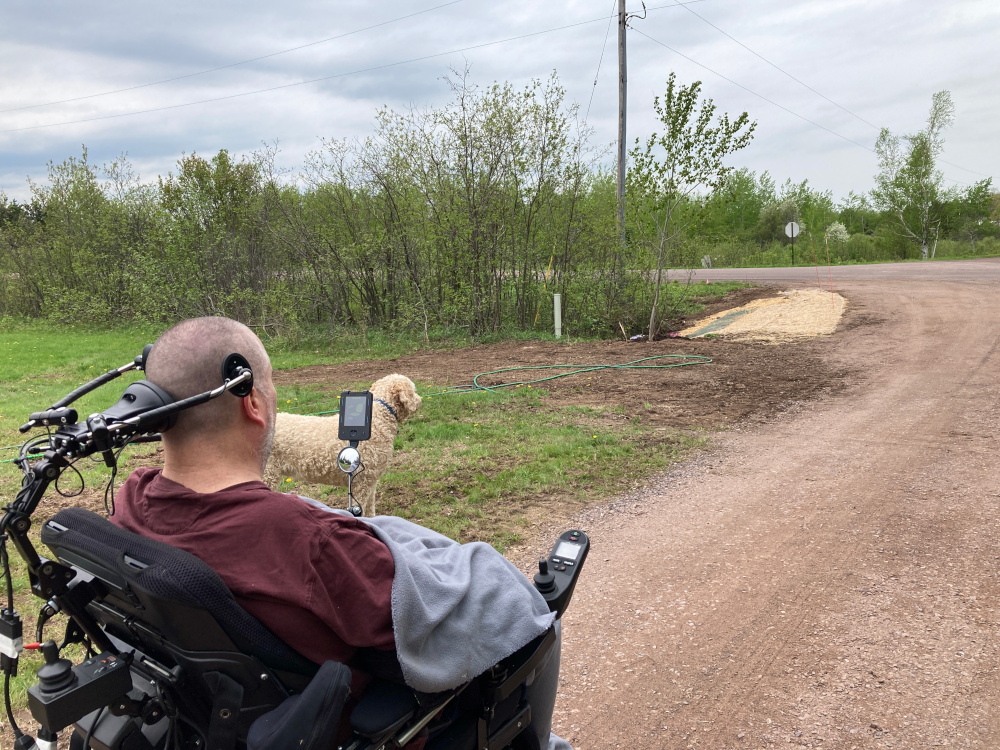When There Isn’t Time to See a Tree Grow

As I left our house to get the kids from school, the tree was gone.
A contractor’s crew was removing brush from the ditch with an excavator to extend the culvert that passed under our driveway. My husband, Todd, had specifically asked that the poplar tree be left alone.
I called Todd. “They removed the tree,” I said.
Todd was upset, which is saying a lot because he takes most things in stride — even his progressive disability due to having ALS for the last decade.
The contractor called Todd to apologize. His crew had finished another job early, and they had started on our culvert before he had communicated the details of the plan.
The driveway was originally built over a culvert at the bottom of a deep ditch. The narrow entrance, with steep drop-offs, was precarious to navigate. When my dad plowed snow for us, he kept the approach of the 12-foot driveway open, but since his death, the apron has been a problem. It got narrower and narrower as snow accumulated throughout the winter, because I was nervous about driving over the edge while blowing snow with our tractor.
It was Todd’s idea to address the issue. I appreciate how he takes care of things, even though he is paralyzed and his breathing is compromised due to ALS progression. Yet he is still investing his time and talents to make our home run smoothly.
A couple weeks ago, Todd asked the contractor to extend the culvert by 20 feet, widen the driveway by 10 feet, and create a gradual slope down the remaining 10 feet to eliminate the steep drop-off to the ditch. The next day, I saw the contractor’s truck parked in the driveway, and I had a chance to talk to him about what needed to be done. I explained where the new part of the driveway should go.
“And what about the tree?” he asked.
“I’ll have to ask Todd,” I said, knowing that Todd has a good eye for design. “He usually feels more strongly about things like this than I do, and he’ll probably have an opinion.”
Todd definitely wanted to keep the tree. “It frames the driveway, and it creates a natural separation between the road and our property,” he said.
Todd talked to the contractor on the phone and asked that he keep the tree, but the crew didn’t know that. It was hard to put too much blame on them for removing the tree, because poplars grow like weeds here in northern Michigan, and the tree wasn’t much taller than the brush that surrounded it.
“I haven’t been this disappointed for years,” Todd said.
“Really?” I asked, thinking about the ALS progression he has experienced. Total paralysis. Weak lungs. Almost dying in January. Now needing noninvasive ventilation nearly 24/7.
A missing tree seems like a small thing in light of what he is facing, but throughout the course of the disease, we have found that small losses sometimes hit him harder than the big ones.
“The contractor said he could plant a maple,” Todd said, “but I won’t be around to see it grow. It’ll be 40 years before the tree amounts to anything, and I’ll be long gone.”
My heart ached as I thought about what it’s like for Todd to face a shortened future. He doesn’t have time to see a tree grow up. Todd doesn’t know if he’ll be able to see our children to adulthood, and it’s unlikely he’ll be here to see them begin careers and start their own families.
Todd said he told the contractor he could find a tree on our property to transplant. There was a maple near our shed, but it was taller than Todd remembered — too big to transplant. It had grown quite a bit since we built our house 10 years ago.
I found another poplar along the side of our field. It was only about 12 feet tall, small enough to scoop up with the excavator and hopefully survive the transplant. The crew moved the tree, and I formed a basin around it with dirt and mulch. I ran hoses to the end of the driveway to water it.
A few days later, Todd rolled down the driveway to see the completed project. He was pleased with how it turned out, and he liked the new tree.

Todd inspects a recently planted tree at the end of the driveway. (Photo by Kristin Neva)
Today, I went out to water the tree. Some of the leaves are dry and brittle, and some are drooping. I’ll continue to care for it, but I fear that even with my best efforts, I may not be able to keep it alive. Unfortunately, that’s an all-too-familiar feeling.
Note: ALS News Today is strictly a news and information website about the disease. It does not provide medical advice, diagnosis, or treatment. This content is not intended to be a substitute for professional medical advice, diagnosis, or treatment. Always seek the advice of your physician or other qualified health provider with any questions you may have regarding a medical condition. Never disregard professional medical advice or delay in seeking it because of something you have read on this website. The opinions expressed in this column are not those of ALS News Today or its parent company, Bionews, and are intended to spark discussion about issues pertaining to ALS.








Creighton Rider
Nice, poignant and oh-so-true about how some seemingly small things really affect us. Thank you!